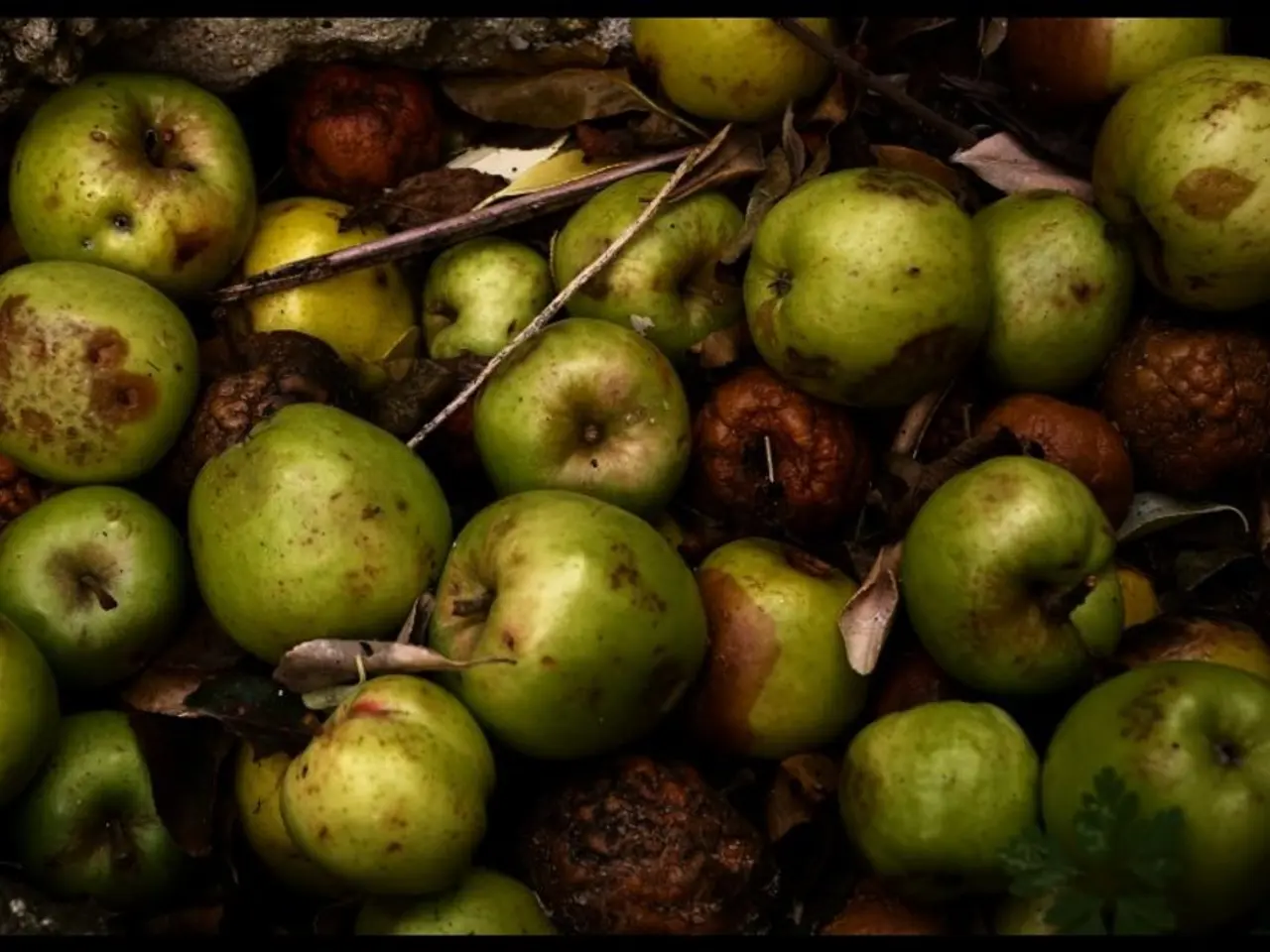Preserving Harvest Through Dehydration of Fruits and Veggies
Drying is an ancient method of food preservation, using the sun, wind, and fire to remove water. However, for those seeking to retain maximum nutritional value, modern methods such as freeze drying and microwave vacuum drying are recommended.
Freeze drying, a process that dries food at low temperatures and under vacuum, is highly effective at preserving heat-sensitive vitamins, antioxidants, proteins, minerals, and flavor compounds. It maintains the original tissue structure, texture, and moisture state, resulting in high-quality dried fruits and vegetables suitable for long-term storage and rehydration [1].
Microwave vacuum drying, on the other hand, offers faster drying by penetrating food evenly with microwave energy under vacuum conditions. This method results in better nutrient retention, color, flavor, and texture compared to conventional hot air drying [2]. It is particularly suitable for high-moisture fruits and vegetables such as berries, leafy greens, and tomatoes.
For practical home or small-scale drying, electric dehydrators or ovens are commonly used. The ideal drying temperature range for fruits and vegetables is about 120–140°F (50–60°C) to effectively remove moisture without cooking the food [5]. Uniform slicing and proper spacing during drying are important to ensure consistent drying and prevent spoilage [3][5].
In summary, the best methods for maximum nutrient retention are freeze drying and microwave vacuum drying [1][2]. If using traditional hot air drying methods, maintaining the temperature between 120–140°F for fruits and vegetables is recommended [5]. Equipment options include freeze dryers (for industrial or specialized use), microwave vacuum dryers, electric dehydrators, or ovens [1][2][3][4]. Additional tips include slicing evenly, avoiding overheating, and drying thoroughly to inhibit microbial growth while preserving nutrients [3][5].
Fruit leathers, a popular dried fruit product, can keep up to 1 month at room temperature, but for storage up to 1 year, they should be placed tightly wrapped rolls in the freezer. Fruit juices can be used for pretreatment, with pineapple or orange juice being common choices. Select ripe fruit for drying, and cut into 1/8-inch to 1/2-inch slices [4].
To pasteurize dried food, either place it in a freezer bag and freeze for 48 hours or heat it at 150°F for 30 minutes or 175°F for 15 minutes. The energy input for drying is less than for freezing or canning, and the storage space for dried foods is minimal compared to canning jars and freezer containers [4].
In conclusion, by minimizing loss of vitamins, antioxidants, color, flavor, and texture, these approaches result in high-quality dried fruits and vegetables suitable for long-term storage and rehydration.
Nutrition science emphasizes the importance of preserving heat-sensitive nutrients in dried foods, making methods like freeze drying and microwave vacuum drying advantageous due to their superior nutrient retention compared to conventional hot air drying. These modern methods maintain the original tissue structure, texture, and nutrient composition of heat-sensitive fruits and vegetables.




